Morvalis Look And Feel
The information below is intended to be used to get a feel for the atmosphere of the nation and provide inspiration about what kinds of clothes, weapons and armour are common. Costume is aspirational, and attendees are not expected to have perfect kit from the start – instead we encourage everyone to put effort into improving their kit over time, starting with basics and adding to it bit by bit, and not criticise others costume. Advice should only be given when asked for.
The “Key Costume” for each nation is intended to be elements of national dress that help to identify the difference between nations, with pieces of clothing or themes which highlight that difference. A basic LARP shirt or tunic and trousers or skirt is all that is needed as base layers for every nation, plus some element of the Key Costume for the nation chosen as where that character is from. Everything else is a bonus – but it improves the look of the whole setting when everyone buys in to the world being played out and endeavour to look on brief for their own nation.
More information on the minimum costume standards and items which should be avoided in all nations is available here.
Nation Overview

Beauty and savagery, practicality and luxury, Morvalis is a place of contrasts, where life is lived in pleasure and death spent in service to the nation.
Morvalis is a region where death is a part of life, and their clothing reflects that. They embrace life to the full, and their clothing is as pigmented and contrasting as their personalities. There is a distinct 1500s Germanic flavour to this nation in the form of Landsknecht and Trossfrau costuming, with its cutting and slashing, colour blocking and bright jewel tones.
Fantasy elements come in the media that is inspired by this era – various interpretations of Snow White and vampiric settings of tabletop games. Elaborately paned sleeves, slashing that reveals the colours of clothing on layers underneath and velvet trim as contrast are all key to this look. Those who choose to fight in life do so because for most of them it is their calling. Over time a warrior, battle priest or war mage replaces their clothing and armour with as intricate and luxurious elements as possible, adding to it all the time so upon death their body is visibly above the rest of the ranks of undead as a catacomb saint-esque officer. It is also common for the Morvalians to incorporate elements of death iconography in their clothing: bodices might be appliquéd with a ribcage motif, skulls may be hidden in the patterns of crocheted shawls or lace trims. Others use bones as jewellery or armour – this is best done using safe larp-safe foam or thermoplastic rather than real animal products. Death is beauty in Morvalis.
Embrace the Dark Beauty of Morvalis: Join us in this land where ambition and luxury reign, and life is lived to its fullest potential. Pursue your passions, form lasting bonds, and leave your mark on a society built on the balance of life and death.
Colour Palette
High-contrast, high-pigment, bright jewel tones and deep shades.
Wools, velvets, cottons, linens, matte fabrics and velvet trims.

Themes And Key Words
Necromancers, “death as part of life”, “memento mori”, gothic beauty, sacrifice, indulgence, “luxury and leisure”, clothing in this nation is bold and bright, high contrast and reflects their love of life.
The people of Morvalis live a life of excess, in part because of the sacrifice of many of their number and they do not forget it. Their clothes are loud and proud, with much use of bright colours and high contrast combinations. Fashion and inventiveness in dress is prized, because adding to the great variety of clothing is a valuable contribution to their society. Sleeves and trouser legs need not match, either by colour or shape, and often sleeves are detachable to be able to mix-and-match an outfit.
The main element that makes Morvalian dress different to other nations is the heavy use of slashing, cutting through one layer to show off a pop of colour of what is below. Perhaps this has an element of the beauty in rot; things decomposing and showing what is underneath. Regardless, it is used in inventive ways, using slashing, contrasting ribbons and panes -parallel strips of fabric that billow out and show off the fabric below it – to display a vibrant colour palette.
The other thing about Morvalis is they do not shy away from macabre iconography, incorporating skulls, long bones and ribcages in particular into their clothing. Sometimes these are real1, but more often they are symbolic artistic depictions, created with appliquéd fabric, embroidery, jewellery, lace and other crafts.

Fantasy Inspiration
Many versions of Snow White use the iconic elements of 1500s Germanic fashion we want to play with – paned sleeves, rich colours and fabrics etc.
Classically Vampire/Necromancy themed media which often use high contrast colour blocking to show group identity and elaborate gowns to highlight that the wearer does not need to work – thralls or other undead servants do the work
Necromancy in other genres such as sci-fi, using bones as iconography, armour and memorial all in one, with a religion to match.






Historical Inspiration
Landschnechts – iconic German mercenaries who operated from 1470-1600, but particularly 1500-1530 for their most iconic clothing. The fighters and their camp followers (Trossfrau and Kampfrau) created an asymmetrical, brightly coloured, high-contrast fashion that has had a massive influence on certain fantasy settings.
Catacomb Saints – gilded, armoured corpses of Catholic Saints used as relics in some churches.
Extreme cutting, slashing and sleeves made up of “panes” – multiple strips that show off another colour underneath. Popular in European fashion between 1500-1650, and particular in Germany in the early 1500s.






Headwear In Morvalis
Hats are very popular in Morvalis, and come in a great variety of shapes and styles.
The most iconic are probably the “tellerbarett”, flat, floppy hats that can be made up in a vast array of styles. Generally these are made of matching fabric to some of the outfit worn with it, with feathers, panes, slashing and ribbons to create a lot of drama on the head. Some are worn into battle on top of small round helmets, hidden almost entirely by the hats. These range from smaller dinner-plate sized brims to enormous and dramatic, tied or pinned to another cap or coif underneath.
Soft caps, arming caps, simple hats and St Birgitte’s caps are all in regular wear. Some are more brightly coloured or decorated than those worn by other nations.
Hair nets can be useful for keeping long hair out of the way, and mixing hats with hairstyles. These hairnets could be completely practical or highly decorated as a hair adornment.



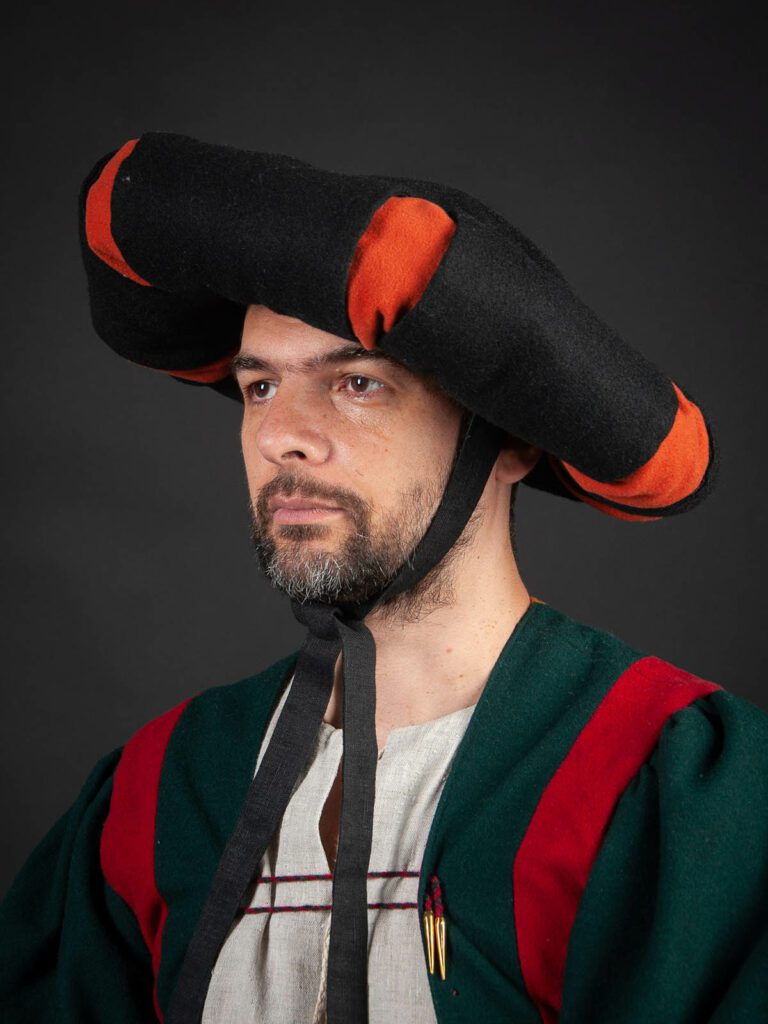

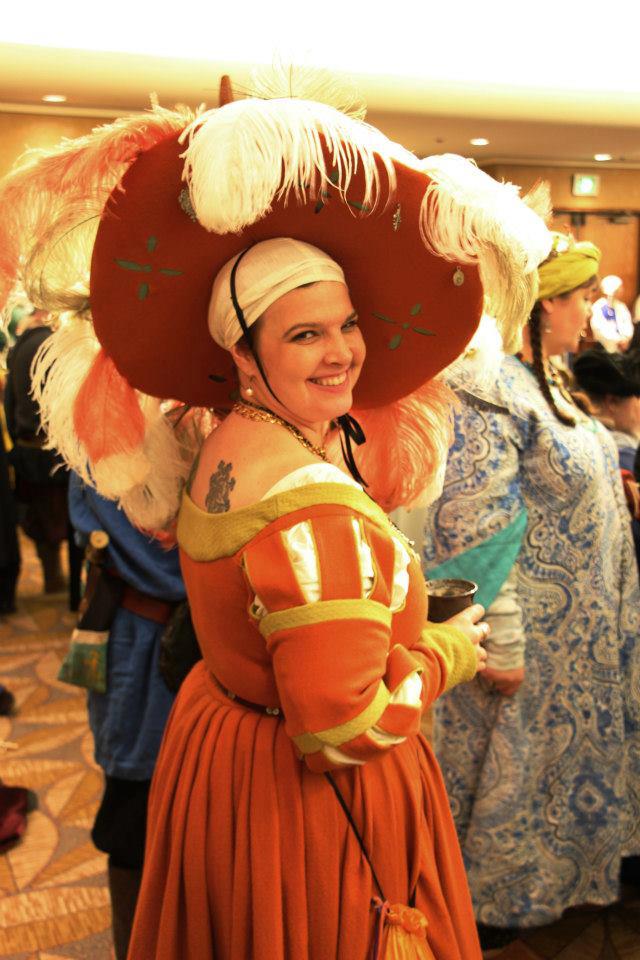
Key Costume Items For Morvalis
Key Costume Items are elements of the Look and Feel of each nation that are a cultural part of what makes up that nation, informed by their history and societal norms. Ideally, an outfit for any nation should aim to incorporate at least one of the Key Costume Items to ensure that characters are recognisably from their nation at a distance!
Key Costume Item – Bones
Bone symbolism is used in many ways in Morvalis:
Symbolic ribcages appliquéd onto bodices; humerus, ulna and radius on top of sleeves, echoing the bones beneath and what is to come.
Skull pattern crochet and lace shawls, and veils made from the same are a popular accessory, especially among the Gravecallers who raise the dead.
Light armour and priestly vestments can be made of or decorated with bones, gilded and bejewelled or scrimshawed with etchings.
Bone jewellery is easily made from antler or thermoplastic, worn as prayer beads, or incorporated into clothing as buttons or embellishment.



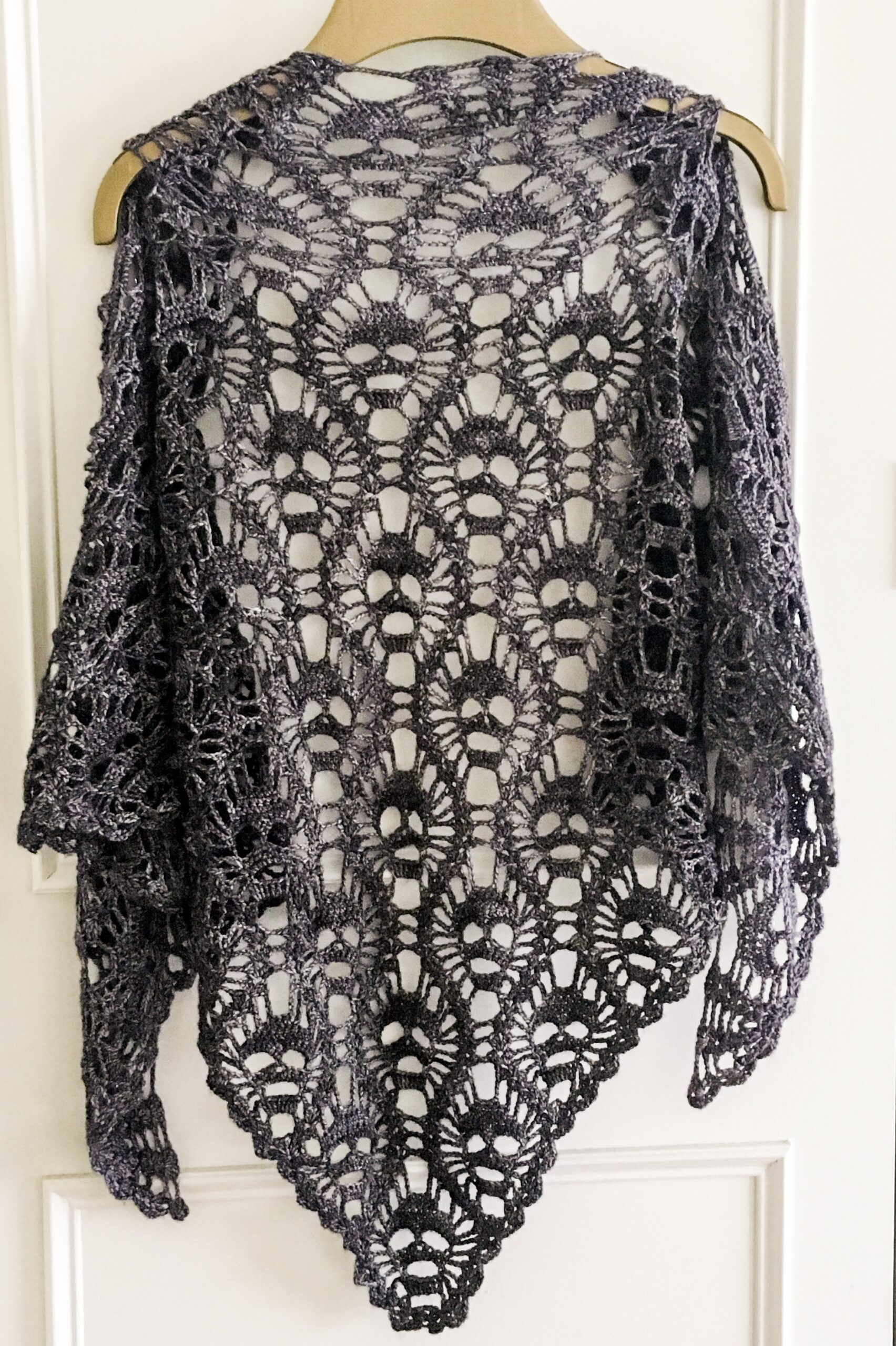


Key Costume Item – Slashing
Slashing is the practice of cutting decorative patterns into clothing to show a contrast colour underneath. These can show off a base layer with a lot of frill and flounce, or another layer of the item of clothing with a variation of colour or texture.
Slashing is often done in geometric lines, starbursts, crosses and floral patterns, and sturdy fabric such as wool is best used for it to make sure the fabric doesn’t fray. Lighter fabrics can be used as well, but it’s best to check the degree of fraying before starting. Alternately, a long strip of thicker fabric can be slashed and stitched onto lighter skirts or waffenrock as a decoration.
A particularly extreme version of this is using panes – sections of fabric in long strips or ribbons, which are used in place of a section of sleeve or trouser leg to make a very voluminous bulge of fabric underneath with decorative stripes of the panes on top.






Armour For Morvalis
Armour in Morvalis is broadly inspired by German and European armour of the 1400s-1600, but with plenty of space for fantasy elements.
Armour is often piecemeal, for some it is built up over time and improved bit by bit to work towards leaving the most impressive looking corpse possible as a captain in the undead army.
Light and Medium Armour
- Gambesons and arming jack, especially in bright colours and with decorative sleeves.
- Leather breastplates and other leather armour pieces.
- Armour made to look as if it is made of bone. In most cases this would count as medium armour.

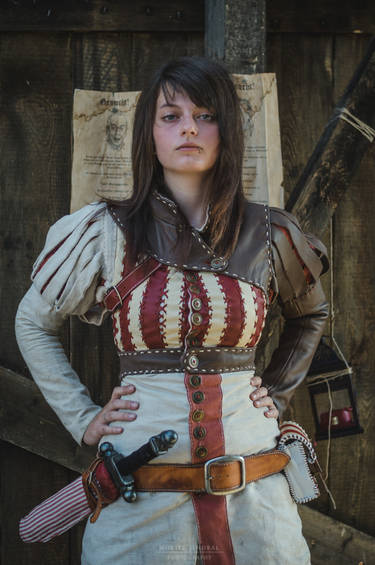
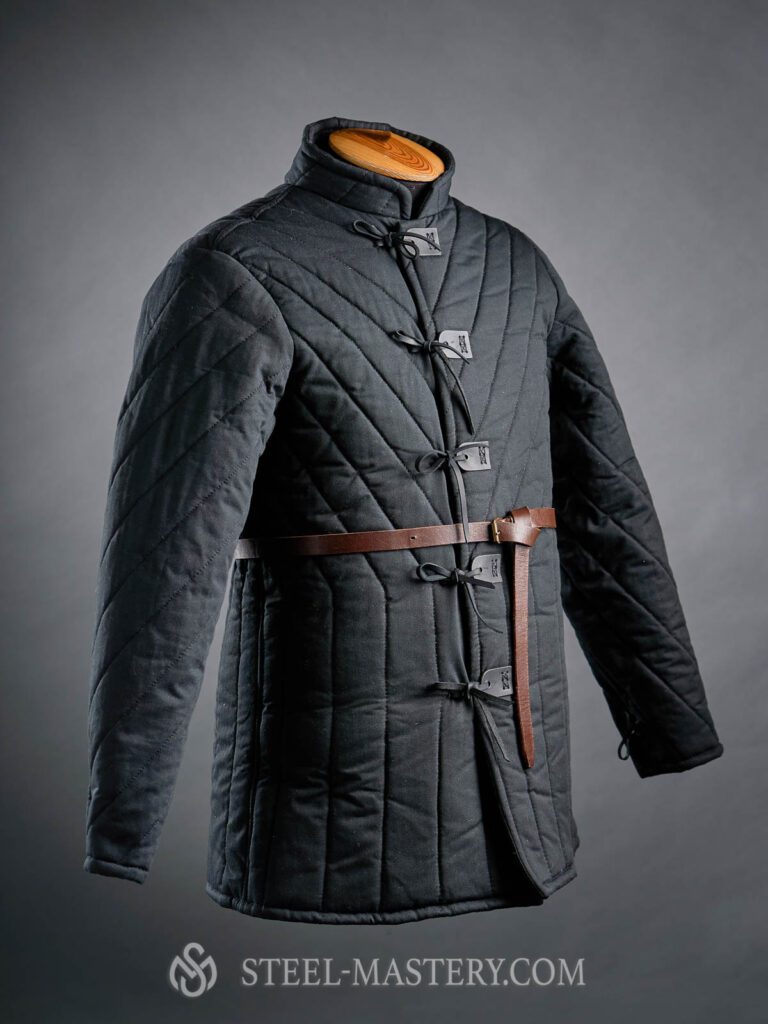
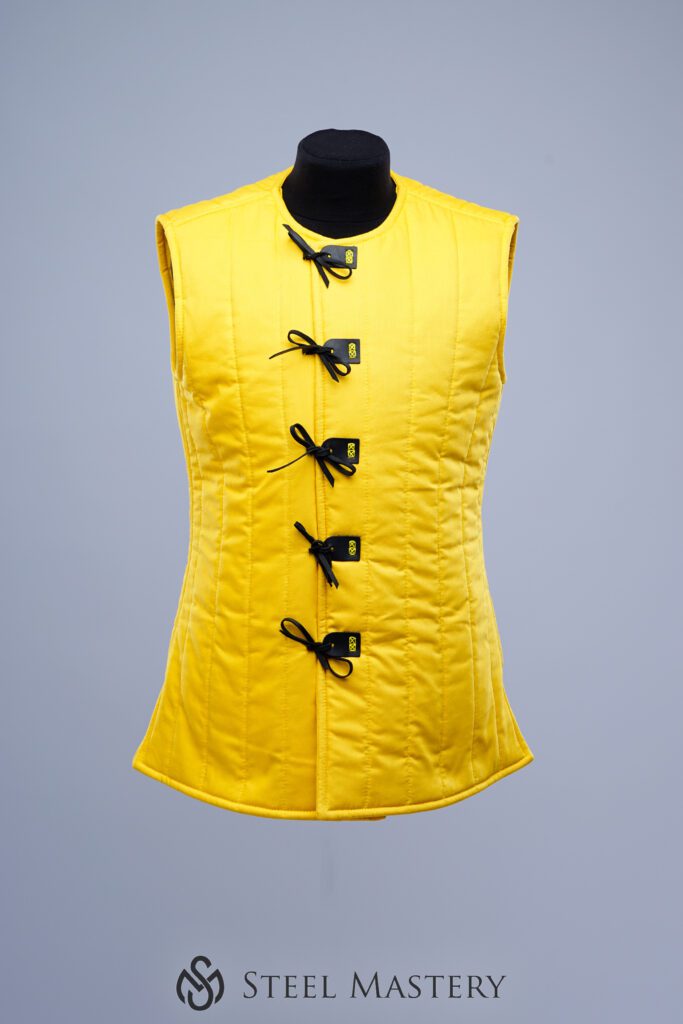


Heavy Armour
- Plate armour – especially breastplates, tassets, arm armour and leg armour. These can be piecemeal and mixed with clothing. Some paint their plate armour in order to further show off colour.
- Chainmail is also worn, usually as separate skirts and filling gaps in plate, such as voiders and Bishop’s mantles.
- Other styles of heavy armour, such as scalemail and brigandines may be appropriate, especially when used in a way that emphasises the nation’s enjoyment of fashion and novelty.






Helmets
- Sallets are the most common form of helmet in Morvalis, especially when painted with colours that match the outfit of the wearer, or adding sashes and feathers.
- Simple round helms are also popular as they can be hidden inside much more fashionable hats.
- Burgonet helmets are also worn, especially for heavy shock troops.






Weapons In Morvalis
Two handed weapons are the most common form of weapon:
- Zweihander or two handed swords. Flamberge-style blades with a ripple flame effect are iconic to Morvalis.
- Polearms such as halberds, bardiches, warhammers and pikes are also regularly used.
- Shields other than bucklers are rare, which tend to be round, or used alongside mage implements.
- Two-handed mage staffs are used most by mages, with no upper limit on dramatic, morbid and fantastical decorations.
- Macabre-looking items like daggers and wands may also work for Morvalis characters.






Archetypes In Morvalis
Archetypes are particular types of character in each nation, which offer a framework of the default types of mage, priest, warrior, artisan etc within that culture, and a way to think about designing a character who fits into the nation as a starting point, in order to encourage a cohesive nation that can make choices about individuality from that point.
These are by no means exhaustive, but the examples below depict some flavours of common character types and the costume elements that are often worn by them.

Gravecallers
The role of a Gravecaller carries a lot of responsibility and, in some families, leads. They are responsible for ensuring the needs of the nation are met in terms of quantity of undead servants, but this is not done lightly. Magic is their purview; to bring comfort in life, to protect the things that are worth protecting, and to ensure that a good death comes from a life well lived.
Some Gravecallers wear veils as a kind of symbolic mourning, respecting the lives lost so their skills can be used.
Other nations are sometimes confused by the clothing of a Gravecaller when meeting one for the first time, expecting black and red and white, and little besides, but many Gravecallers are among the nation’s most vibrant, being reminded every day with close contact to the dead of how fleeting life is.
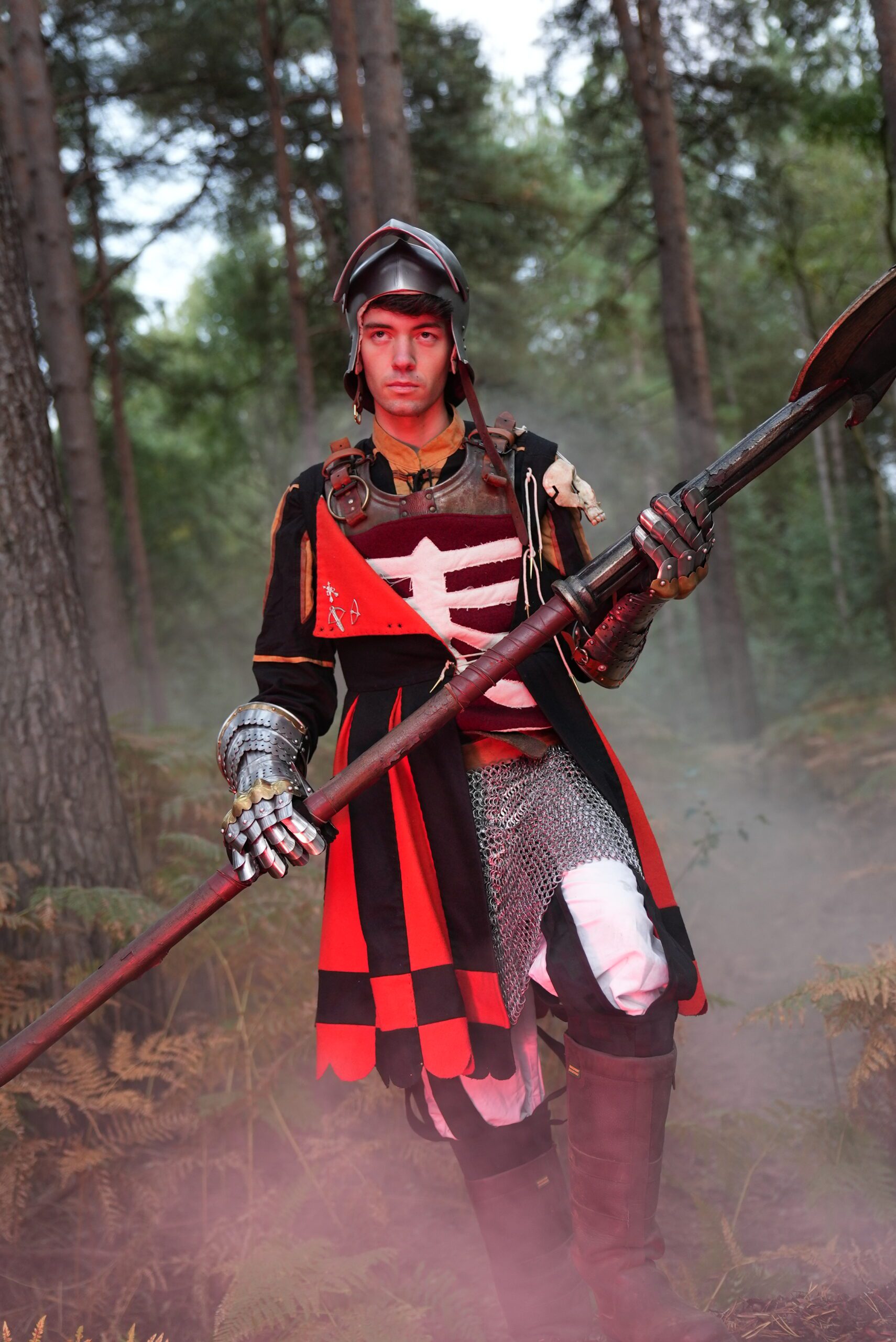
Dreadguard
Dreadguard are elite warriors who uses all their free time to hunt, practice swordplay and other military pursuits. They are typically responsible for their vassal Family’s protection, leading small units of undead or other living warriors, but can also easily find employment as a mercenary. Dreadguard are often heavily armoured, the anvil against which a hammer can strike, and it is not unheard of for a Dreadguard to act as the obvious distraction while a Bloodshade performs the task in quietude.
Dreadguard dress to stand out. The vast majority have sworn to leave their body to the state as warriors in the nation’s undead army, and it is usually Dreadguard who are used as the officers in that force. As a result they spend most of their resources making sure to leave as beautiful and spectacularly overdressed a corpse as possible, some even commissioning armour specifically to be used only after their death, leaving them a catacomb saint among common soldiers.
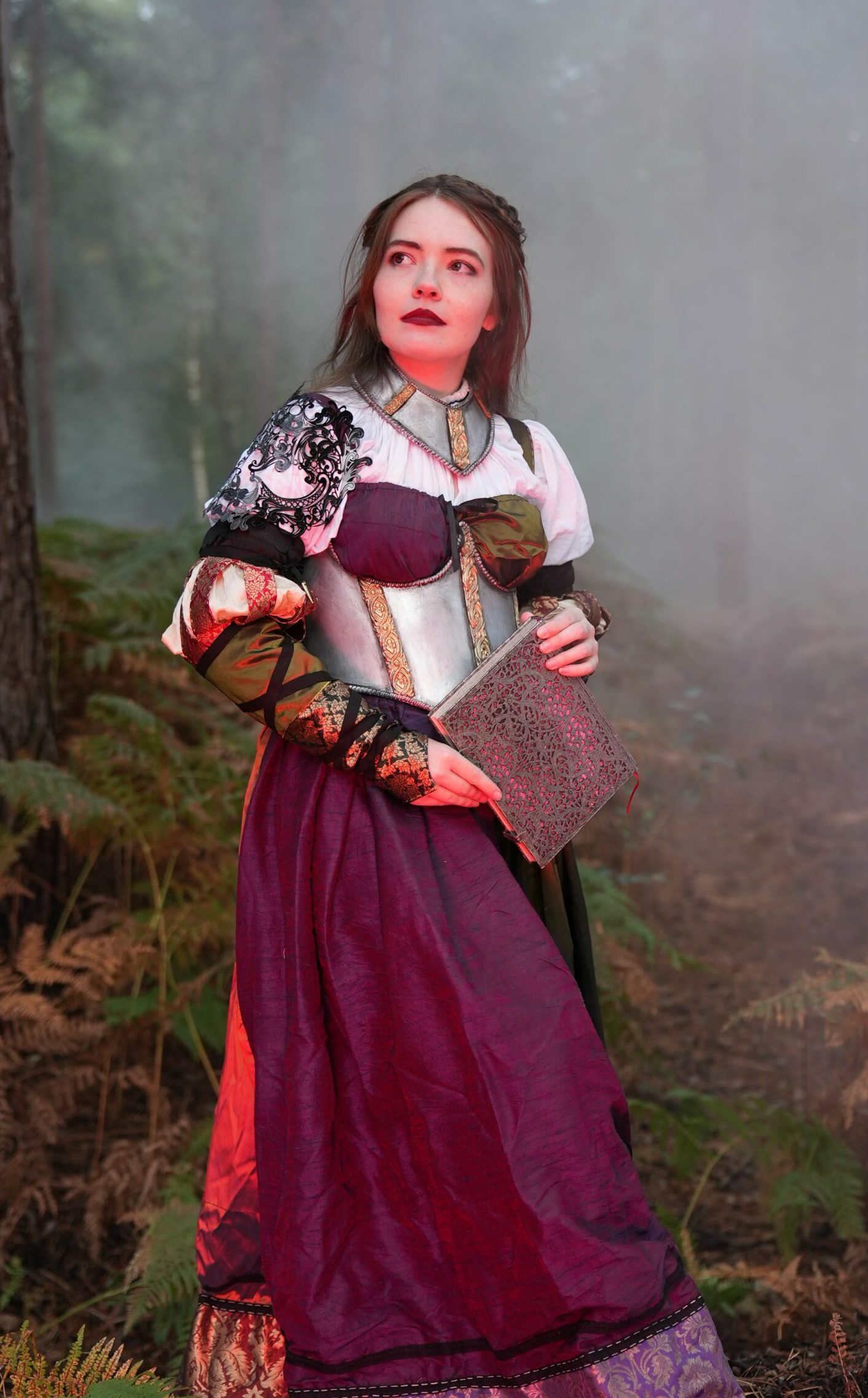
Leeches
A life well lived is one lived in comfort, and this extends to the physical. A body that cannot operate is one that isn’t living life to the full, and the Leeches strive to ensure that all the peoples of Morvalis are hale and hearty. This attention goes beyond the physical; mental health is a vital part of Morvalian life, and Leeches are as often therapists and seekers after truth in life as much as they are sewing up bodies. Battlefields are a common source of wounds, of course, and a Leech may sometimes be called upon to support in combat. It is not unheard of for a Leech to be as skilled in causing wounds as well as healing them, knowing just where to strike and how hard to twist.
Leeches come from all levels of Morvalis’ society, some in blood-soaked overgowns, others in silken finery. When a Leech os a scholar-warrior, they tend to dress more practically than Dreadguard, possibly because they know how easy it is to puncture vital organs.
How To Put Together a Morvalis Outfit
- A shirt, as baggy and voluminous as possible.
- Knee-length trousers or breeches, which can be asymmetrical with differing style and colour on legs, or tighter trousers, usually in a bold colour.
- Ridiculous sleeves, with as many panes and slashing as possible – these could be tied on or laced on to the mid layer, or a separate item of clothing attached to a bolero or similar.
- A mid layer to show off colour blocking: a jacket, doublet, waffenrock or dress.
- Sleeves should be as elaborate and oversized as possible in terms of volume and decoration – but not length; long draped sleeves are iconically Valdraeth in style and not worn in Morvalis.
- Stripes and slashing, colour blocked trim and appliquéd decoration on every layer possible.
- Common colours between members of a Family to show allegiance and group affiliation.

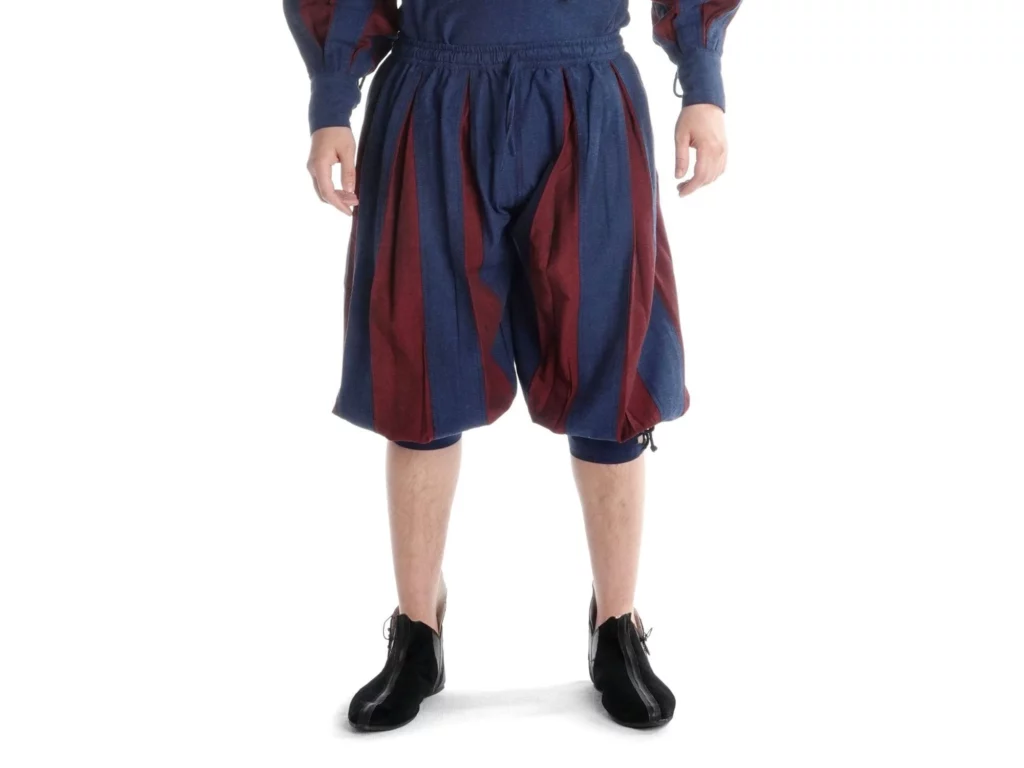





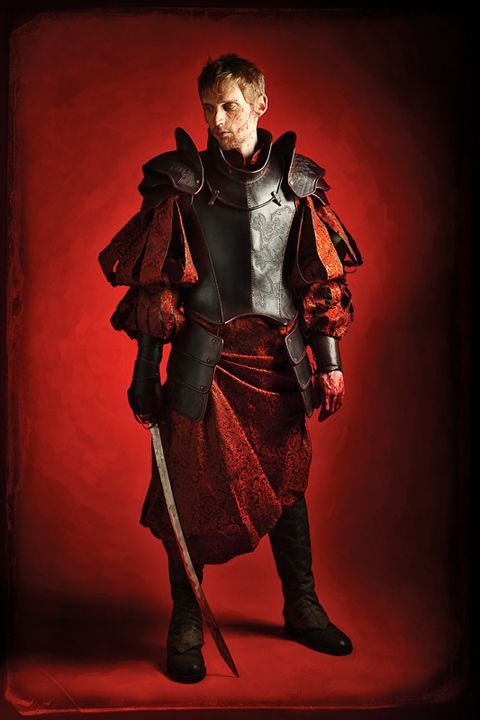
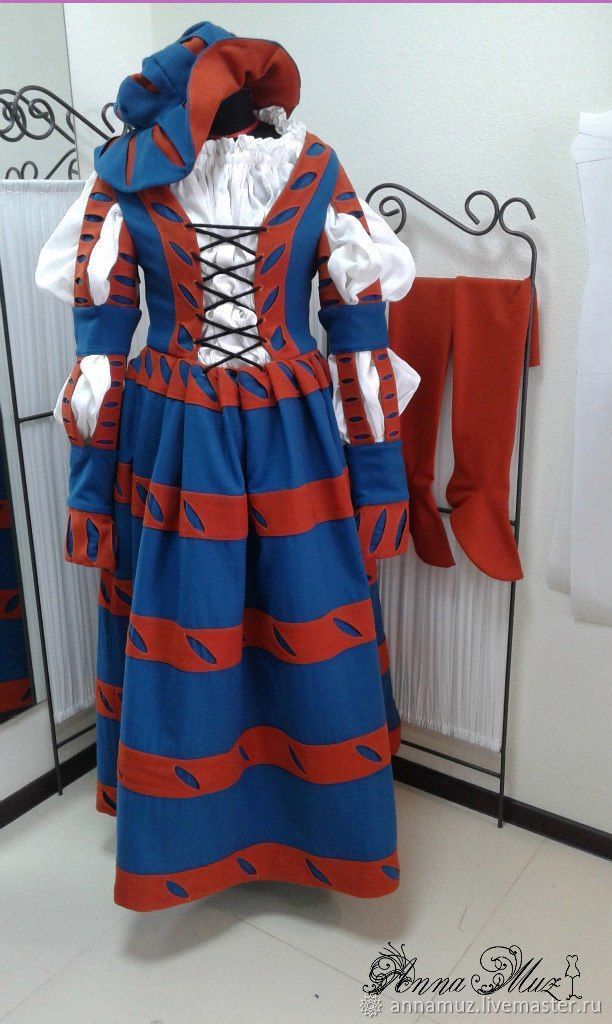



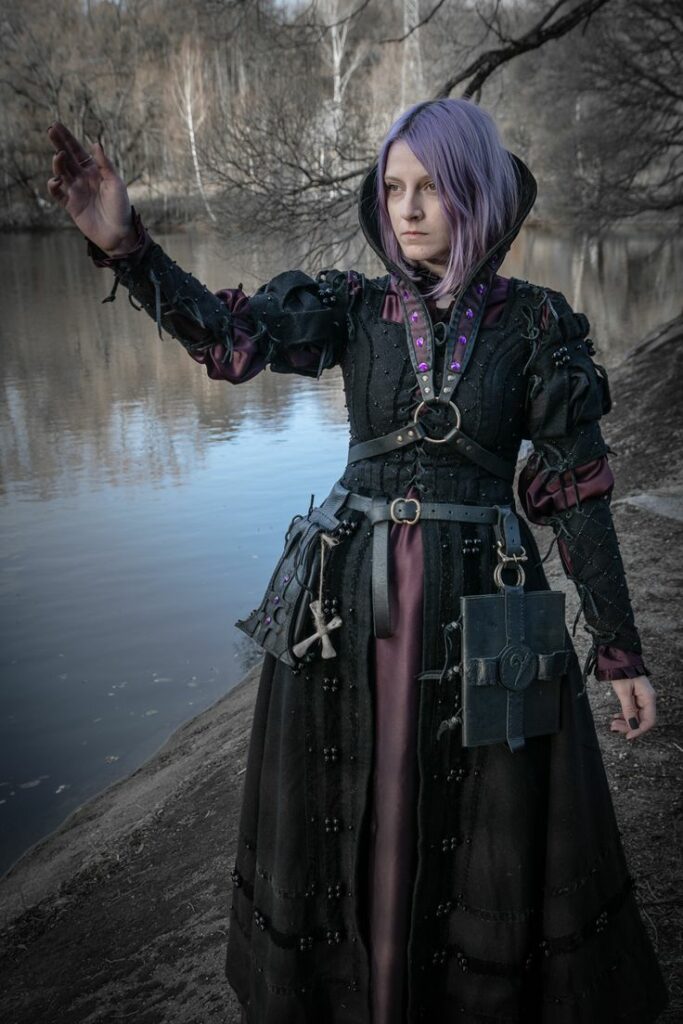








- Caution should be taken with using real animal bones, as they are brittle and can cause injury, as well as ethical implications for using such materials. Phys-reps for “real” bones can be made with foam and latex, 3D printed plastic, and thermoplatics such as worbla. ↩︎



